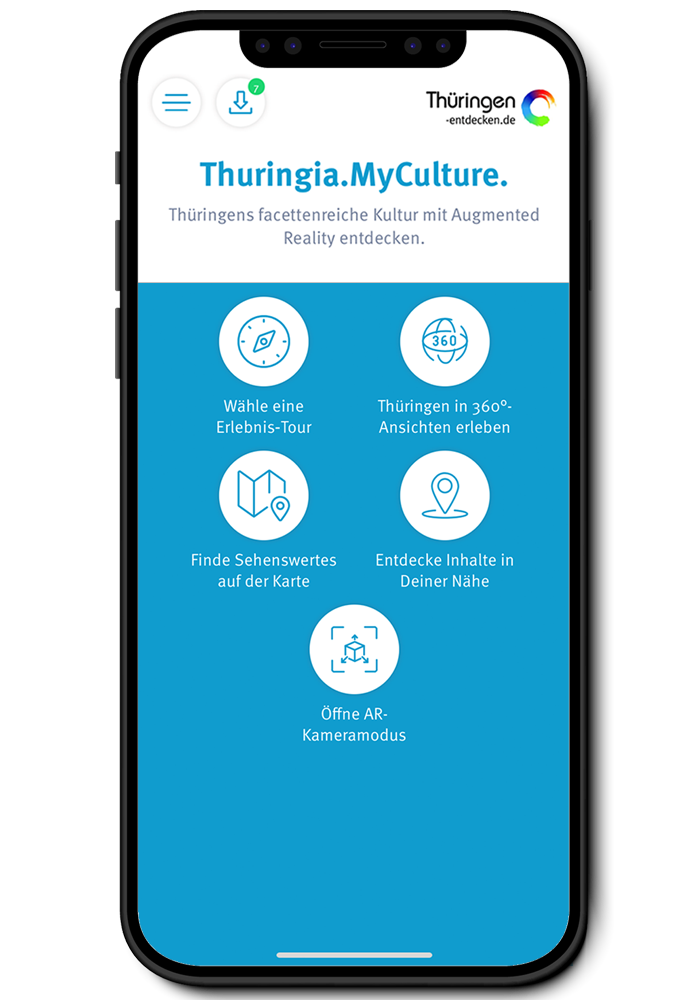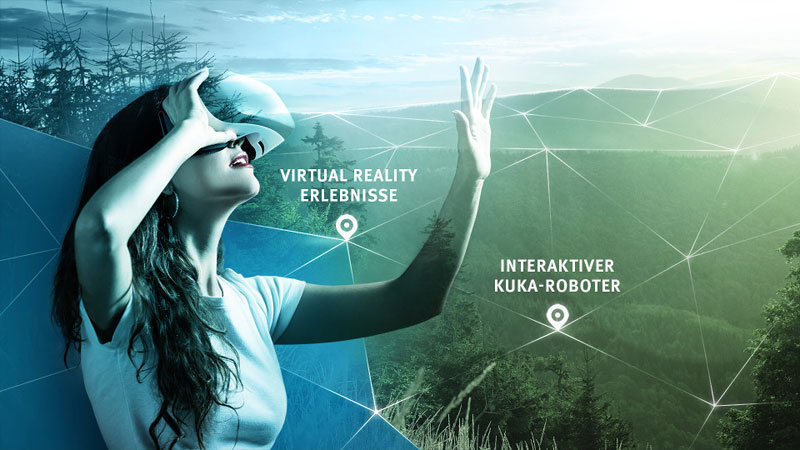Visit the state capital Erfurt and go on a virtual discovery tour through Thuringia.
How words changed world history
From Wartburg Castle to the Luther House in Eisenach
A truly historical location: the legendary Luther Room at the mighty Wartburg Castle, which has towered majestically above the Thuringian town of Eisenach for nearly a thousand years and attracts almost half a million visitors every year. This is where Martin Luther produced his translation of the New Testament in only eleven weeks, while he was in hiding under the alias of Squire George after being arrested 500 years ago. I have been captivated by the atmosphere of this special place ever since I first came here as a child. An ancient wooden door opens to reveal Luther’s small writing room. I look reverently at the portrait of the great reformer on the wall and see an old desk marked with deep grooves, along with a wooden chair. In front of it is a whalebone footstool. The weathered wall behind the green tiled stove is a reminder of how unpleasantly draughty and cold the castle must have been back then – and also that Martin Luther is said to have chased away the devil in this very room by throwing his inkwell at him. This spartan yet evocative place continues to fascinate me as much today as it did on my first visit. Here is the original site where Luther, quill in hand, translated the New Testament by candlelight – and, in so doing, made world history. Its aura spurs my curiosity, inspiring me to find out more. I would like to learn more about this enigmatic man, Martin Luther, and about the art and culture of the Reformation and the significance of Luther’s translation of the Bible.
Luther and the Bible: multimedia exhibition brings history to life
While I’m at Wartburg Castle, I hear about the Luther House in Eisenach and its ‘Luther and the Bible’ exhibition. It sounds like the perfect place to quench my thirst for knowledge and find answers to my questions. As I’ve got plenty of time today, I decide to walk down to the town centre from the castle. That takes about half an hour and the route is almost certainly the one that Luther would have taken in his day.
The Luther House is one of the oldest and prettiest half-timbered buildings in Thuringia and only a stone’s throw from the market square and St George’s Church. Martin Luther lived in this house with the Cotta family during his schooldays, now it’s a museum. The small rooms now known as ‘Luther rooms’ date back to 1356. The Luther Trail also goes directly past the door – I had already spotted its route markers with the green letter ‘L’ on a white background up at Wartburg Castle.
As I step inside, I am slightly surprised to discover a bright interior, friendly faces, and a large, attractive museum shop. There are references to Luther everywhere you look! I notice lots of little Luther Playmobil figures, lovely postcards and fridge magnets, and books large and small. They even sell colourful Luther socks that bear his famous quote ‘Here I stand. I can do no other’. The half-timbered building was completely renovated from 2014 to 2015. A modern extension with a museum shop was added, while a brand-new multimedia exhibition was installed in the original part of the building. The renovations and refurbishment have also made almost the entire facility accessible for disabled visitors.
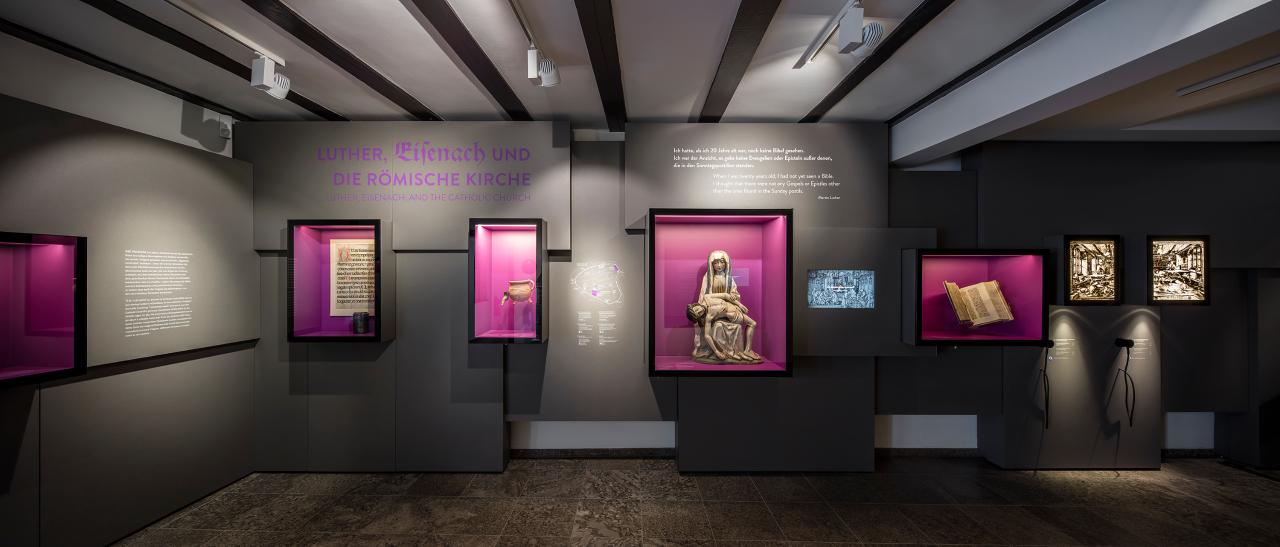
Permanent Exhibition in the Luther House Eisenach ©Tobias Wille, Stiftung Lutherhaus Eisenach
As you make your way around the permanent exhibition, you can tell straight away that this isn’t some dusty old small-town museum! Rather, it is a modern treasure trove of outstanding exhibits that you are free to explore under your own steam on a self-guided tour. Among the highlights of the collection are impressive medieval works of art, two portraits of Martin Luther from Lucas Cranach’s workshop, and the parish register entry recording the baptism of Johann Sebastian Bach. But for me, the most exciting elements are the various multimedia installations and contemporary comparisons. I am impressed by the large timeline in the stairwell, the indulgences vending machine, by finding out how printing, then a new and expensive process, helped to make the Bible more generally accessible, and by the small audio station and map illustrating the evolution of the German language. Immersing myself in the world of the Reformation, I begin to grasp that Luther did not just drive the development of the German language forward; in fact, he could be said to have created it in the first place. Common German phrases such as ‘im Dunkeln tappen’ (to be in the dark) ‘Ebenbild’ (splitting image) and ‘Feuertaufe’ (baptism of fire) came into existence through his translation of the New Testament. His Bible was not the first, as most people believe, but by far the best. Here in the Luther House, I am beginning to appreciate for the first time what a profound impact this translation had on all areas of people’s lives at that time. And I realise, too, that it is not Luther’s words alone that exert this influence, but rather the combination of words, pictures and music. The composer Johann Sebastian Bach, who was born in Eisenach almost 200 years later, grew up with Luther’s legacy. Luther’s writings predominated in his bookcase, so perhaps it is not surprising that he set most of Luther’s songs to music and was inspired to compose a number of choral cantatas.
Dark chapters in church history: religious faith and race ideology
The Luther House belongs to the Protestant Church, which is currently devoting a special exhibition to the subject of anti-Semitism. The Institute for the Study and Eradication of Jewish Influence in German Church Life, also known as the ‘Dejudaisation Institute’, was founded 80 years ago at Wartburg Castle. Its aim was to bring the church’s teachings in line with the race ideology of the National Socialists. Anti-Jewish remarks made by Luther were exploited to further the cause. The exhibition’s impressive multimedia stations and displays allow visitors to examine the issue in an informed and critical way. One installation presents the ‘revisions’ to Luther’s Bible: an excerpt from the ‘dejudaised’ New Testament clearly demonstrates how Luther’s words were altered to reflect the National Socialist ideology.
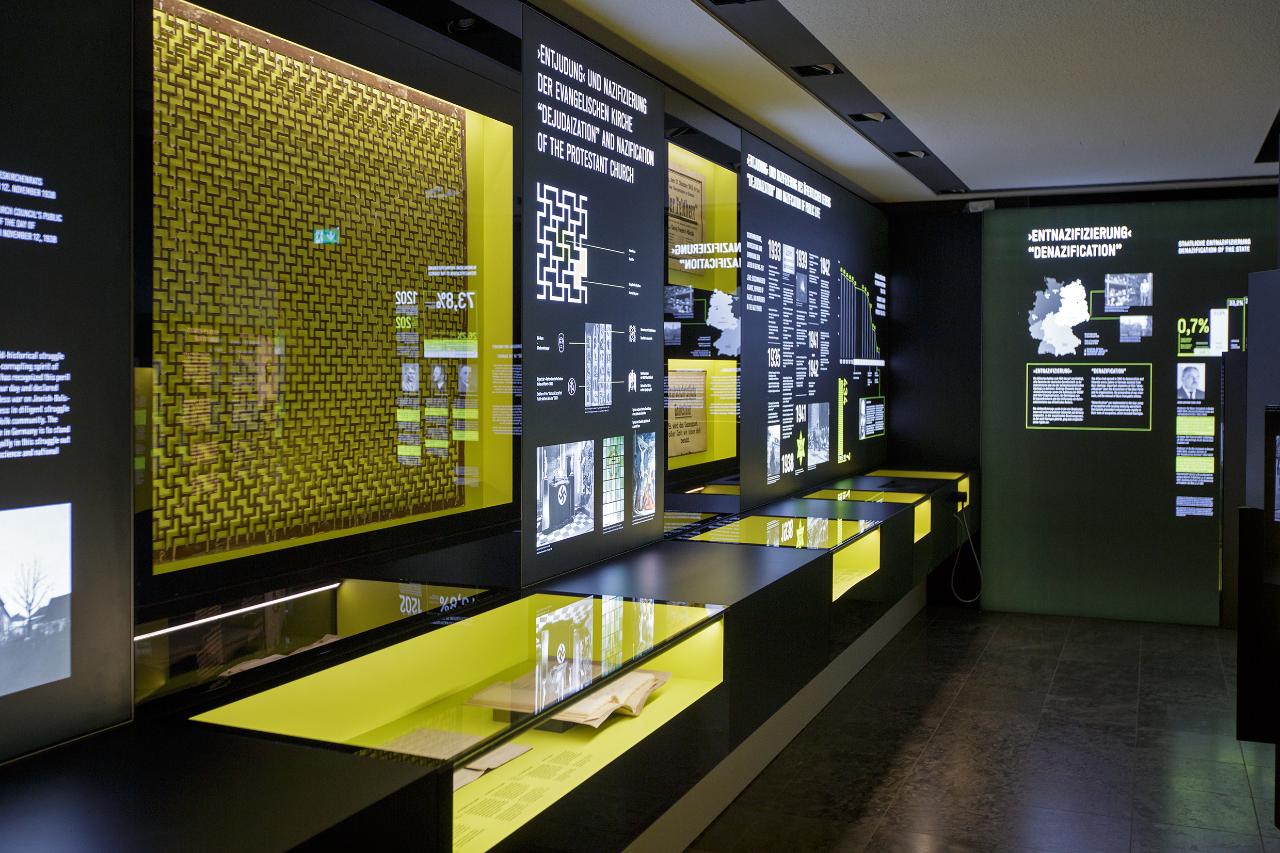
Special Exhibition in the Luther House Eisenach ©Sascha Willms, Stiftung Lutherhaus Eisenach
A pause for reflection with Ai Weiwei: man in a cube
Overwhelmed by my insights and experiences today, and by the sheer scope of the exhibition, I round off my tour with a visit to the historical courtyard of the Luther House. A youth group is working in the small Luther workshop next door, under the expert guidance of the museum’s education specialist. They are studying the old German cursive script and practising calligraphy. I sit down on the small bench in the courtyard, stretch my legs and enjoy the fresh air. Here, right in front of me, out in the open and quite beautiful in its simplicity, is the museum’s most recent acquisition. Created by Chinese artist Ai Weiwei to commemorate the anniversary of the Reformation in 2017, a concrete cube is divided into two blocks to reveal a solitary figure, an imprint of the artist himself. It is a symbol of both freedom and imprisonment, and it immediately reminds me of the isolation that Luther endured at Wartburg Castle and of the ‘Freedom of the Word’.
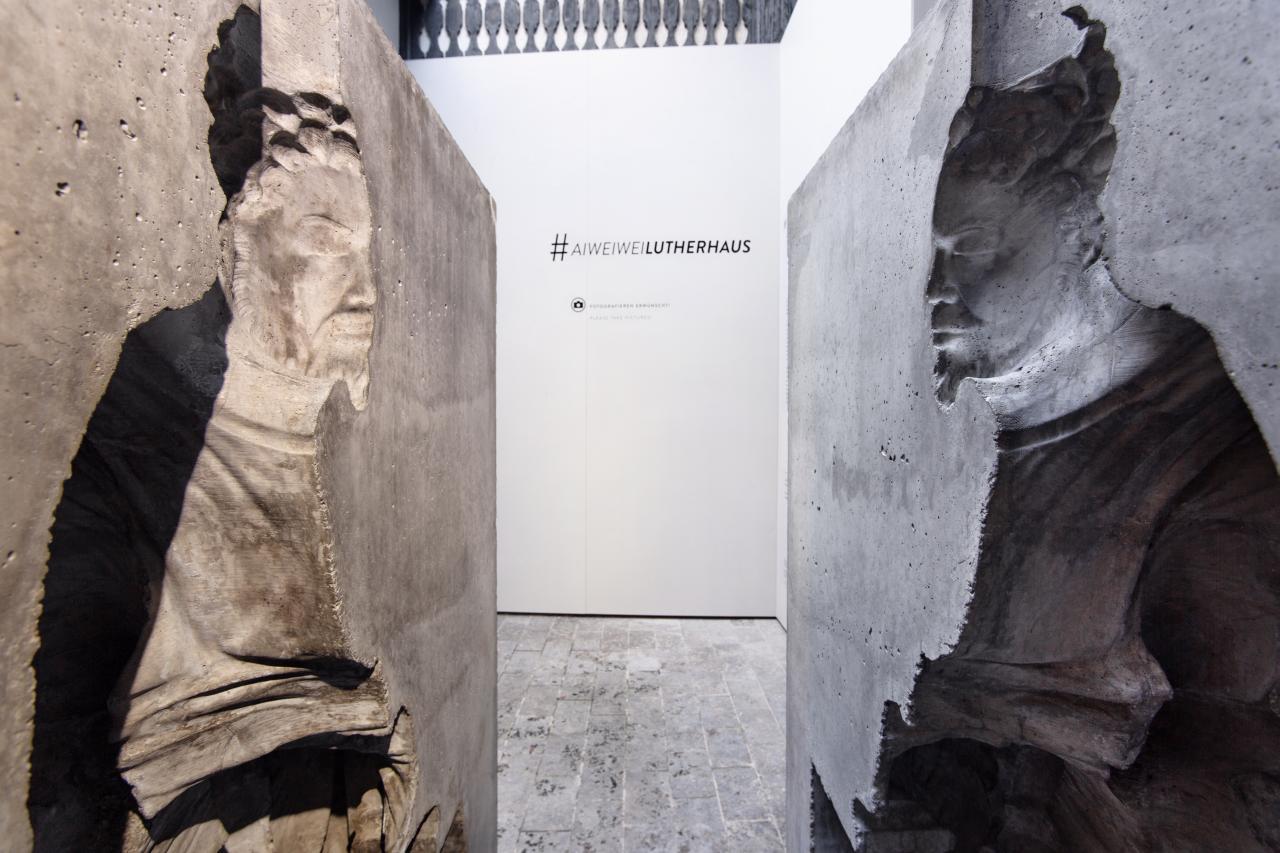
man in a cube by Ai Weiwei ©Anna-Lena Thamm, Stiftung Lutherhaus Eisenach
The Reformation was a time of upheaval that brought about great change, not only in Germany but the whole world. I am still reflecting on the experiences of the day and the impressions of times long past, shaped by many extraordinary people and important events. Now I can make much better sense of it all. After glancing at my watch, I decide to pay a brief visit to the museum shop to buy the little Playmobil figure of Luther that caught my eye when I arrived, as a reminder of the day. And I promise myself that I will return as soon as I can. Definitely no later than 2022 – for that is when Thuringia celebrates the 500th anniversary of the translation of the Bible at Wartburg Castle. And I have already decided that Bach's House will be on the itinerary for my next visit to Eisenach so I can experience how wonderful Luther’s texts sound when set to music.
Accessibility
Did you like this story?
You might also be interested in ...






